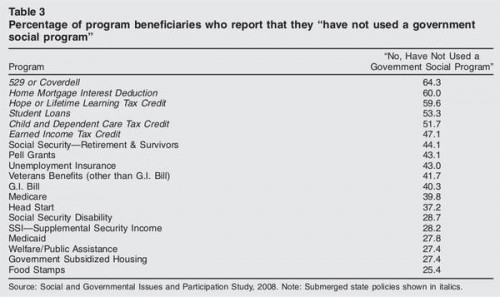In “Rule Enforcement without Visible Means,” Theodore Caplow discusses conformity to the norms that guide the practice of celebrating Christmas. These norms are informal — that is, they aren’t enforced in any official way and aren’t encoded in policy — yet Caplow found consistent agreement on expectations, as well as conformity to them. Some of these are easily identifiable, such as the Wrapping Rule, which requires that gifts be wrapped in Christmas-appropriate wrapping paper (or at least marked with a bow if they’re too large or irregularly-shaped to be wrapped).
Others aren’t so readily apparent. For instance, Caplow discusses the Scaling Rule, which guides our purchases of gifts based on the relationship with the recipient. Everyone agreed that a spouse should get the single most valuable gift you buy; kids come next (and should have equal amounts spent on them), then parents/in-laws (who should get similarly valuable presents), and so on. There is a widely-accepted unspoken hierarchy for giving gifts. While we say “it’s the thought that counts,” we also believe that the gifts we give carry social messages about how much we care. Regardless of intent, giving a gift that is perceived as nicer or more expensive to a coworker than to your spouse, or spending more on friends than your kids, would likely be taken as a sign of inappropriate or misplaced loyalties.
Caplow’s point is that social interactions are highly regulated by informal norms, ones we learn and follow often without ever openly recognizing them. Will LaSuer sent in a video that illustrates this point. The video explains etiquette in men’s restrooms: proper spacing when selecting a urinal, flushing, making eye contact or speaking to others in the restroom, and so on. It’s an explicit discussion of the usually taken-for-granted norms of daily life.
One note: The first 4:40 of the video covers these basic norms. After that, it goes on to a long scenario that you may want to skip. While, as Will says, the language and imagery is nothing you wouldn’t see in, say, South Park, if you’re thinking of using the clip in class to illustrate norms, I’d definitely stop at the 4:40 point, both because of the content and because I don’t think the rest of the video contributes anything to the basic sociological point.
Will suggests using the video along with John Paul’s “urinal game” to help students grasp the concept of informal norms.
Caplow, Theodore. 1984. “Rule Enforcement without Visible Means: Christmas Gift Giving in Middletown.” American Journal of Sociology 89(6): 1306-1323.
Paul, John. 2006. “‘Flushing’ Out Sociology: Using the Urinal Game and Other Bathroom Customs to Teach the Sociological Perspective.” Electronic Journal of Sociology. ISSN: 1198 3655.










